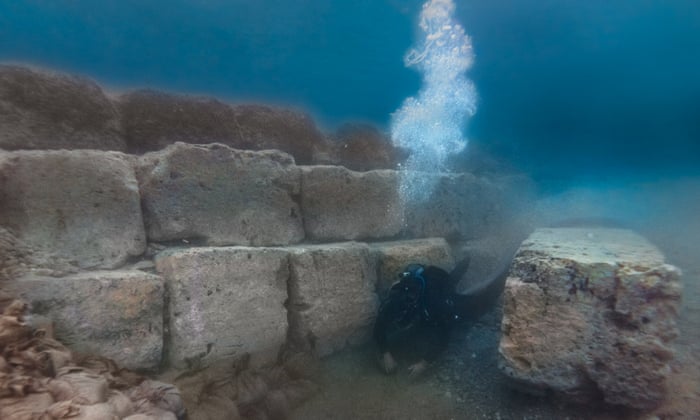via Interesting Literature
Sylvia Plath once said that she thought anything should be able to be used in a poem, but she couldn’t imagine a toothbrush in a poem. Yet at the end of ‘Rhapsody on a Windy Night’, T. S. Eliot had used the toothbrush as a way of hinting at the workaday world (we brush our teeth every day, at least if we wish to avoid too many trips to the dentist), with it hanging on the wall, just as the shoes wait by the door, ready for the following morning when the world will once more spring into action. ‘Rhapsody on a Windy Night’ is often overlooked among Eliot’s early poems – ‘The Love Song of J. Alfred Prufrock’, ‘Portrait of a Lady’, and ‘Preludes’ are more famous – but its innovative imagery deserves closer analysis. You can read ‘Rhapsody on a Windy Night’ here.
Continue reading
==============================
via Boing Boing by Mark Frauenfelder
I've not see these videos of The Beatles’ “Paperback Writer” and “Rain” before. The quality is great and I love both of these songs, especially Ringo’s phenomenal drumming on “Rain”.
via the Guardian by Peter B Campbell

Underwater archaeologist Matej Školc carefully excavates the foundations of an ancient harbour structure. Photograph: Vassilis Tsiairis/Lechaion Harbour Project
New archaeological excavations at the ancient port of Corinth have uncovered evidence of large-scale Roman engineering. Named Lechaion, the port was one of a pair that connected the city of ancient Corinth to Mediterranean trade networks. Lechaion is located on the Gulf of Corinth, while Kenchreai is positioned across the narrow Isthmus of Corinth on the Aegean Sea. These two strategic harbours made Corinth a classical period power, but the Romans destroyed the city in 146 BC when conquering Greece. Julius Caesar rebuilt the city and its harbours in 44 BC, ushering in several centuries of prosperity. Recent excavations by the Lechaion Harbour Project have revealed the impressive engineering of the Roman Empire.
Continue reading
==============================
via the Guardian by Jonathan Smith

PHOTO: GETTY
“The quickest way to start a punch-up between two British literary critics,” Philip Larkin suggested, “is to ask their opinion of the poems of John Betjeman.” I know what he means. In 1960, I bought Summoned by Bells, Betjeman’s verse autobiography, and I placed the hard- back proudly on the bookshelf in my under- graduate rooms. Everyone who came in pointed at it and laughed.
Continue reading
==============================
via Arts & Letters Daily: Ursula K. Le Guin in the Paris Review
I first learned about the Sartre Prize from “NB,” the reliably enjoyable last page of London’s Times Literary Supplement, signed by J.C. The fame of the award, named for the writer who refused the Nobel in 1964, is or anyhow should be growing fast. As J.C. wrote in the November 23, 2012, issue, “So great is the status of the Jean-Paul Sartre Prize for Prize Refusal that writers all over Europe and America are turning down awards in the hope of being nominated for a Sartre.” He adds with modest pride, “The Sartre Prize itself has never been refused.”
Continue reading
==============================
via Boing Boing by Cory Doctorow

Director Frank Capra said “It's a Wonderful Life” was designed to “strengthen the individual’s belief in himself” and “to combat a modern trend toward atheism”. But the FBI's 13,533-page Communist Infiltration of the Motion Picture Industry classed the movie as a secret work of Communist propaganda, “written by Communist sympathizers...to instigate class warfare” and “demonize bankers”.
Continue reading
==============================
via Big Think by Paul Ratner
Whether Jesus had any siblings is an old debate within Christianity. A number of passages in the New Testament have been stoking this speculation for almost two thousand years. The Gospel of Mark mentions Jesus having brothers and sisters, while the Gospel of Matthew talks about his “brothers” James, Joseph, Simon and Judas. Are these references more figurative than literal, meaning these are just spiritual brothers? An incredible recent find of an ancient text just put James back in the spotlight of this controversial mystery.
Continue reading if only to view the images.
==============================
via the Guardian by Pajtim Statovci

Miaow wow … the Cheshire Cat in Damon Albarn, Moira Buffini and Rufus Norris’s musical wonder.land inspired by Alice’s Adventures in Wonderland.
Animal characters in works of fiction have generally been used in a rather anthropomorphic way. This can be seen as a problem, though, and many say that reading animals as symbols of us reduces them, makes them smaller, steals their right to be seen as subjects who have their unique, distinctive way of existing. Others say that it’s not a problem at all because it’s not as if animals – even though they’re each different in shape and thought – will ever get to know what we write about them, how we place, use and interpret them and give them meaning through human filters.
Continue reading
==============================
via Interesting Literature
A commentary on Shakespeare’s 97th sonnet
Sonnet 97 has a famous opening line, but the rest of the poem remains less famous. Yet the poets Samuel Taylor Coleridge and Don Paterson have both expressed admiration for it, so the sonnet is worth closer analysis and explication. Before we proceed to a few words of commentary on Sonnet 97, here’s a reminder of the poem.
Continue reading
==============================
via Boing Boing by Andrea James

Looking for a lovely way to honor a special pooch in your life? British sculptor Helen Thompson, aka Holy Smoke, creates textile sculptures of dogs that really capture the essence of dogness.
Continue reading
No comments:
Post a Comment